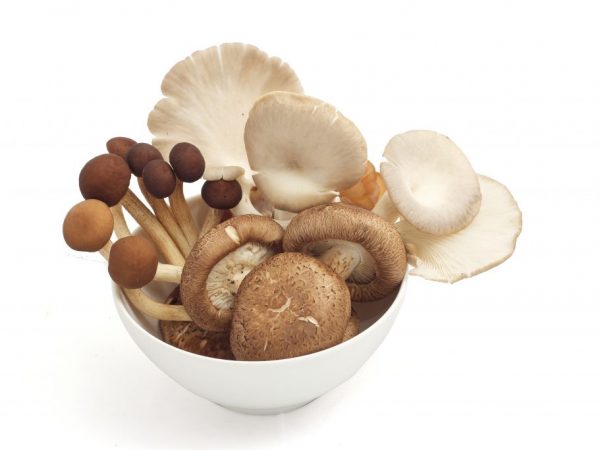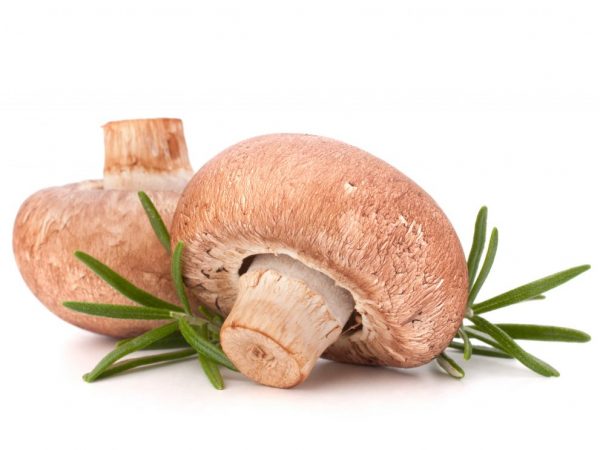Can mushrooms be called vegetables
Mushrooms delight with bright taste characteristics, a variety of shapes, colors and types. It is thanks to these characteristics that they are popular as the main ingredient for the preparation of many dishes from different nations of the world. But, along with plants and animals, mushrooms belong to the third kingdom of living nature. Which raises the question: are mushrooms vegetables or not? It is worth understanding this in more detail.

Can mushrooms be called vegetables
Main characteristics
If we evaluate the chemical composition of mushrooms, then they can mostly be attributed to vegetables. They include the following elements:
- Protein (2-3%);
- Carbohydrates
- Fat-like substances (about 10%);
- Fatty acid;
- Sterols;
- Complex lipids;
- Essential oils;
- Acids (tartaric, fumaric, tartaric, oxalic);
- Vitamin components (C, PP, A, B1, B2);
- Minerals (phosphorus, potassium, sodium, chlorine, sulfur, iron).
The energetic nutritional value of mushrooms is only 30 kcal per 100 g, which refers them to a dietary product. But mushrooms are consumed not only fresh, but also dried. At the moment of moisture loss, the calorie content of mushrooms increases almost 20 times, because due to drying, there is a concentration of nutrients and flavoring substances. And this fact is important to take into account when correcting your diet. And the amount of protein reaches 30%. That is why, in the food chain, mushrooms can replace both plant and animal food in terms of their mineral composition.
Distinctive features of mushrooms
The largest organism on earth is not a whale, but a mushroom, more precisely, its vegetative body, which occupies approximately 965 hectares. A complex system is formed by branching threads, forming the so-called mycelium. The mycelium provides nutrients.
All mushrooms are divided into two equal groups:
- The lower ones are characterized by the absence of transverse partitions;
- The higher ones are divided into cells containing a nucleus. They are able to form fruiting bodies, which people eat.
By their principle of nutrition, mushrooms are more related to animals, since they are saturated only with ready-made organic substances. But the reproduction of fungi can be represented both sexually and asexually, and in a vegetative way.
The role of mushrooms in human life

Some mushrooms have medicinal value
Mushrooms are actively used by people for food purposes, medicine and cosmetology. Certain types of special substances make it possible to create valuable medicines. Mushrooms are also used in culinary dishes, in the manufacture of wine and some expensive cheeses. The lower fungi process many organic substances, making the soil more fertile.
Considering all the useful qualities, we must not forget that mushrooms can harm the body and their neighbors in the ecosystem. They, like sponges, are able to absorb harmful substances from the soil. We are even talking about edible species, which are unacceptable to collect in questionable places to which today a significant part of the territory of any country can be attributed.They can cause human poisoning and even death.
Also, fungi can cause many types of diseases in animals and humans. The ability to survive allows them to grow in different wet places, damaging buildings, trees and more.
What species are mushrooms
According to the classification, fungi represent a separate, very interesting systematic group. Nevertheless, they contain substances that are characteristic of animals. For example, it is vitamin D, which is formed in animal tissues when exposed to ultraviolet rays. As well as urea, fungin and glycogen.
These are unique species that can be found almost everywhere. The ideal environment for them is soil and water. There are separate species that can inhabit (in) the body of a person, plant or animal.
Fungi can represent both unicellular and multicellular organisms.
Irina Selyutina (Biologist):
By size, mushrooms are usually divided into:
- Macromycetes: They have a fruiting body located on the surface of the soil. It is this arrangement of the fruiting bodies that helps the better spread of spores, in which water, wind and animals take part.
- Micromycetes: The bulk of fungi, represented by microscopic organisms.
In some fungi, the vegetative body is a single budding cells. If the daughter cells, after budding, do not separate from the mother, but form something like a chain, then this group of physiologically independent cells is called pseudomycelium. This type of vegetative body is inherent, for example, in yeast.
The absence of cell integuments (walls) is characteristic of the vegetative bodies of slime molds and zoospores of real fungi.
The mycelium, or the vegetative body of the fungus, is divided into:
- Substrate or nutrient: located in the thickness of the substrate, life span from several weeks to many years.
- Aerial (spore-bearing): located on the surface or above the surface of the substrate, forms reproductive organs (sporangia). The interlacing of hyphae forms sclerotia (ergot) and fruiting bodies (cap mushrooms).
Fungi do not have specialized tissues. In highly organized fungi, from densely intertwined hyphae, a false tissue is formed - plectenchyma, from which the fruiting bodies are actually formed.
At the same time, they have the characteristics of plants and animals.
Similarity to plants
- Immobility (attached lifestyle);
- continuous growth;
- the presence of vacuoles;
- strong cell walls;
- reproduction by spores;
- synthesis of vitamins;
- breathing oxygen;
- absorbent way of eating, etc.
Resemblance to animals
- Heterotrophs;
- chitin is present in the cell walls;
- metabolic product - urea;
- lack of plastids, etc.
Conclusion
Mushrooms occupy a special place in the live pie system. They cannot be 100% called a vegetable, fruit or anything else, as they have the characteristics of both sides. Even scientists still do not agree on what to do: should the mushroom be considered a "healthy vegetable" or should it be used as an alternative to meat and eggs.
The complex biochemical structure of the fungus makes it necessary to clearly control its amount in the daily diet, and indeed in the diet in general. So, mushrooms are not permissible for those people who suffer from diseases of the excretory organs, liver and gastrointestinal tract. Also, mushrooms are not desirable in the diet of children. It is better to start introducing them into food after 7 years.



